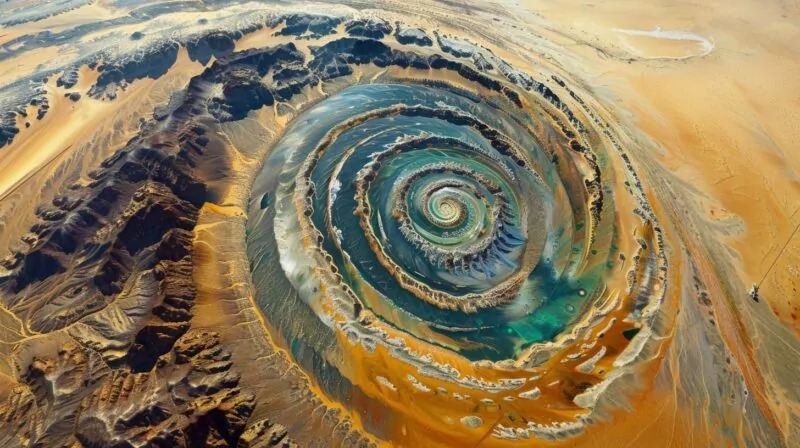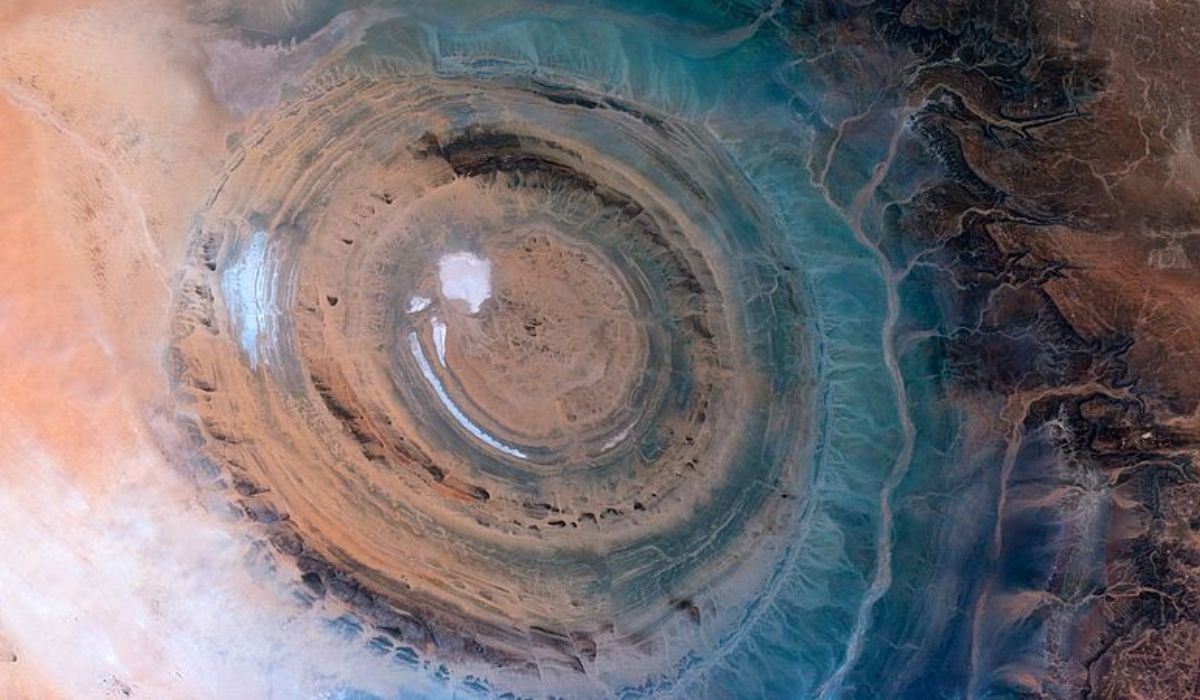While there are many amazing natural miracles in the world, some of the most complicated geological characteristics are hidden in distant places. These strange landscapes were coined by millions of years of natural forces, their notable beauty and fear with peculiar figures.
These geological wonders, from large-scale stone pillars to vivid mountains, are in the shape of frightening caves and foreign-looking salt flats, not only for their rarity but also for a sense of mystery. This article will examine some of the strangest geological characteristics that may be found in some of the most remote places in the world.
The Eye of Sahara in Mauritania: A Natural Wonder in the Desert

Located in the wide desert of Mauritania, the Eye of the Sahara, also known as the Richat Structure, is a strange geological structure. This huge spherical characteristic, which is 40 kilometers in diameter, is best seen from orbit, where it carries on the appearance of a large-scale bull's-eye.
Comprehensive research has shown that Sahara's eye is actually a heavily eroded geological dome, rather than that of the crater that was first created by a meteorite. The referable rock exposed in the concentrated rings of the structure is the result of natural erosion over millions of years. The unique colors of these rings, which range from blue to brown, give an uncontrolled look to the eye.
This feature is located in a remote region, and its scale and strange concentrated patterns make it one of the strangest and most attractive geological structures on Earth. Strikingly opposite with its desolate desert terrain, it contributes to its uncanny and alluring charm, piquing the interest of both explorers and scientists.
Discover The Rainbow Mountain: Nature’s Colorful Wonder
In the Peruvian Andes, Rainbow Mountain, also known as Vinicunca, has a geopolitically important and aesthetic natural beauty. Located at an altitude of more than 5,000 meters, this bizarre mountain has red, yellow, green, and purple streaks that flow under their slopes for a painter's palette.
The red color is attributed to iron oxide, green chlorite, and the yellow hue of sulfur, all mineral deposits that have developed over millions of years. Due to the consequences of climate change, the bright stripes hidden once now appear under a layer of snow and ice, making this inaccessible area accessible to courageous travelers.
The isolated settings of the mountain in Peru's Andes combine their real appeal, making it a rewarding and difficult place. Rainbow Mountain stands among the world's most notable geological miracles, which is due to its luxurious beauty set against the breathtaking, severe setting.
Exploring The Wave: Stunning Arizona-Utah Desert Rock Formation

The Wave is an attractive sandstone structure that affects the boundary between Arizona and Utah. It thrills with patterns like its flowing wave. This natural surprise was erased by Navajo Sandstone in millions of years. The Paria is located in the different coach butt of the Canian-Vermilian cliffs wilderness.
The final effect is the surface of a smooth, flowing rock that resembles the waves of the ocean. Iron gives oxide and other mineral waves red, orange, and pink, which contributes to its other way. There are very few day permits available for access to the Wave for the protection of a delicate environment.
Mount Roraima: The Majestic Triple-Border Mountain of Guyana, Brazil, and Venezuela
Mount Roraima, a huge tabletop mountain, or tepui, on the Guyana, Brazil, and Venezuela borders. Rising to an altitude of 2,810 meters, this ancient geological formation is one of the oldest plateaus on Earth, dating back about two billion years. The flat peak of Mount Roraima, which is often immersed in clouds, creates an isolated ecosystem that is home to many unique species of flora and organisms, some of which are not found anywhere else on Earth.
The surface of the mountain is a barren, rocky landscape, with strange rock structures that have been fabricated by millennia and rain. The otherworld atmosphere of Mount Roraima has inspired the stories of the lost world and the stories of mysterious creatures combined with continuous rains that ate the peak. Its foresight and sheer rocks that surround it make Mount Roraima one of the most inaccessible and bizarre geological characteristics on the planet, which is daring and bound by scientists.
Raed more:- Jet-Set USA: Exploring the World Without Leaving American Soil!
Exploring the Jeju Lava Tubes: South Korea’s Natural Underground Wonder
The Jeju Lava Tube on Jeju Island in South Korea is an attractive and bizarre geological characteristic formed by volcanic activity approximately 200,000 years ago. These tubes are part of a large volcanic system including Mount Helson, the highest peak in South Korea.
The ducts were made because the lava flowed from the volcano, with the outer layer being cooled and solid while the melted lava continued to flow inside, eventually leaving behind the hollow tunnels. The tubes are the largest and best preserved in the world; some reach heights of up to 30 meters.
The interior of the tubes is a study in contradictions, with smooth, flowing walls and rigid structures where the lava was unevenly cooled. Multicolored walls formed by various mineral deposits combine the real beauty of caves. Jeju Lava Tube is a UNESCO World Heritage Site and is considered one of the most important and bizarre geological structures in Asia.
